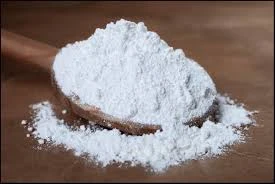
Exploring the Safety and Uses of E110 Food Additive in Culinary Applications
Understanding E110 The Food Additive
E110, also known as Sunset Yellow FCF, is a synthetic food coloring that belongs to the azo dye family. Commonly used in the food industry, this additive imparts a bright yellow hue to various products, enhancing their visual appeal. As we delve into the world of E110, it is crucial to understand its uses, safety concerns, and regulatory status.
Uses of E110
E110 is widely prevalent in the food industry and can be found in a variety of products. It is commonly used in confectionery, beverages, snacks, sauces, and packaged foods. The vibrant yellow color offered by E110 makes it an attractive option for manufacturers looking to enhance their products' aesthetic appeal, especially in competitive markets where visual impact can influence consumer choices. It can be found in products such as jelly, puddings, ice creams, and even some types of cheeses.
In addition to food, E110 is also used in cosmetics and pharmaceuticals. The coloring agent helps in making products more visually attractive and can even aid in the identification of certain medications. This dual-purpose use in both food and non-food items raises questions about consumer awareness and the implications of widespread usage of synthetic additives.
Safety and Health Concerns
While E110 is approved for use in many countries, there have been ongoing debates about its safety. Some studies suggest that artificial colorings, including E110, may be linked to adverse effects, particularly in children. Concerns have been raised about hyperactivity and attention issues associated with certain food dyes. As a result, some countries, such as those in the European Union, require products containing E110 to include warning labels indicating that the additive may have an adverse effect on activity and attention in children.
e110 food additive

The regulatory bodies, such as the European Food Safety Authority (EFSA) and the Food and Drug Administration (FDA) in the United States, have conducted assessments to determine acceptable daily intake levels of E110. The current consensus is that E110 is safe for consumption within established limits. However, the emphasis on minimal usage and consumer awareness remains critical, particularly for those who are sensitive to artificial additives.
Regulatory Status and Consumer Awareness
E110 is classified as a food additive in many regions, and its use is regulated by food safety authorities. In Europe, it falls under the E number system, which categorizes food additives based on their functional properties. While E110 continues to be permitted, there is a growing movement among consumers advocating for natural alternatives. Many individuals prefer foods colored with natural dyes extracted from plants, fruits, and vegetables, leading to a shift in the market dynamics towards organic and natural choices.
The Future of E110 in Food Products
As consumer awareness regarding food additives increases, the pressure on manufacturers to consider the safety and perception of synthetic dyes like E110 intensifies. The trend towards clean labeling and transparency in food sourcing might lead to a decline in the use of E110 and other artificial colorants in food products. Manufacturers may increasingly opt for natural colorings that align with consumer preferences for healthier, more transparent products.
In conclusion, E110 plays a significant role in food manufacturing, providing an attractive yellow coloration to various products. While it is considered safe within regulated limits, ongoing discussions about its potential health effects and the push for natural alternatives suggest that the future of E110 may evolve as consumers demand more information and healthier options. As we navigate through the complexities of food additives, it is vital to stay informed and make choices that align with our health and wellbeing.
-
Nitrile Rubber Honoring Strict Production StandardsNewsAug.22,2025
-
Aspartame Ingredients Honoring Food Safety ValuesNewsAug.22,2025
-
Fertilizer for Balanced Plant NutritionNewsAug.22,2025
-
Cyanide Gold Processing with High Purity AdditivesNewsAug.22,2025
-
Formic Acid in Textile Dyeing ApplicationsNewsAug.22,2025
-
Aluminum Hydroxide Gel in Skincare ProductsNewsAug.22,2025
-
Regulatory Compliance for Global Mining Chemicals UseNewsAug.12,2025
Hebei Tenger Chemical Technology Co., Ltd. focuses on the chemical industry and is committed to the export service of chemical raw materials.
-

view more DiethanolisopropanolamineIn the ever-growing field of chemical solutions, diethanolisopropanolamine (DEIPA) stands out as a versatile and important compound. Due to its unique chemical structure and properties, DEIPA is of interest to various industries including construction, personal care, and agriculture. -

view more TriisopropanolamineTriisopropanolamine (TIPA) alkanol amine substance, is a kind of alcohol amine compound with amino and alcohol hydroxyl, and because of its molecules contains both amino and hydroxyl. -

view more Tetramethyl Thiuram DisulfideTetramethyl thiuram disulfide, also known as TMTD, is a white to light-yellow powder with a distinct sulfur-like odor. It is soluble in organic solvents such as benzene, acetone, and ethyl acetate, making it highly versatile for use in different formulations. TMTD is known for its excellent vulcanization acceleration properties, which makes it a key ingredient in the production of rubber products. Additionally, it acts as an effective fungicide and bactericide, making it valuable in agricultural applications. Its high purity and stability ensure consistent performance, making it a preferred choice for manufacturers across various industries.





